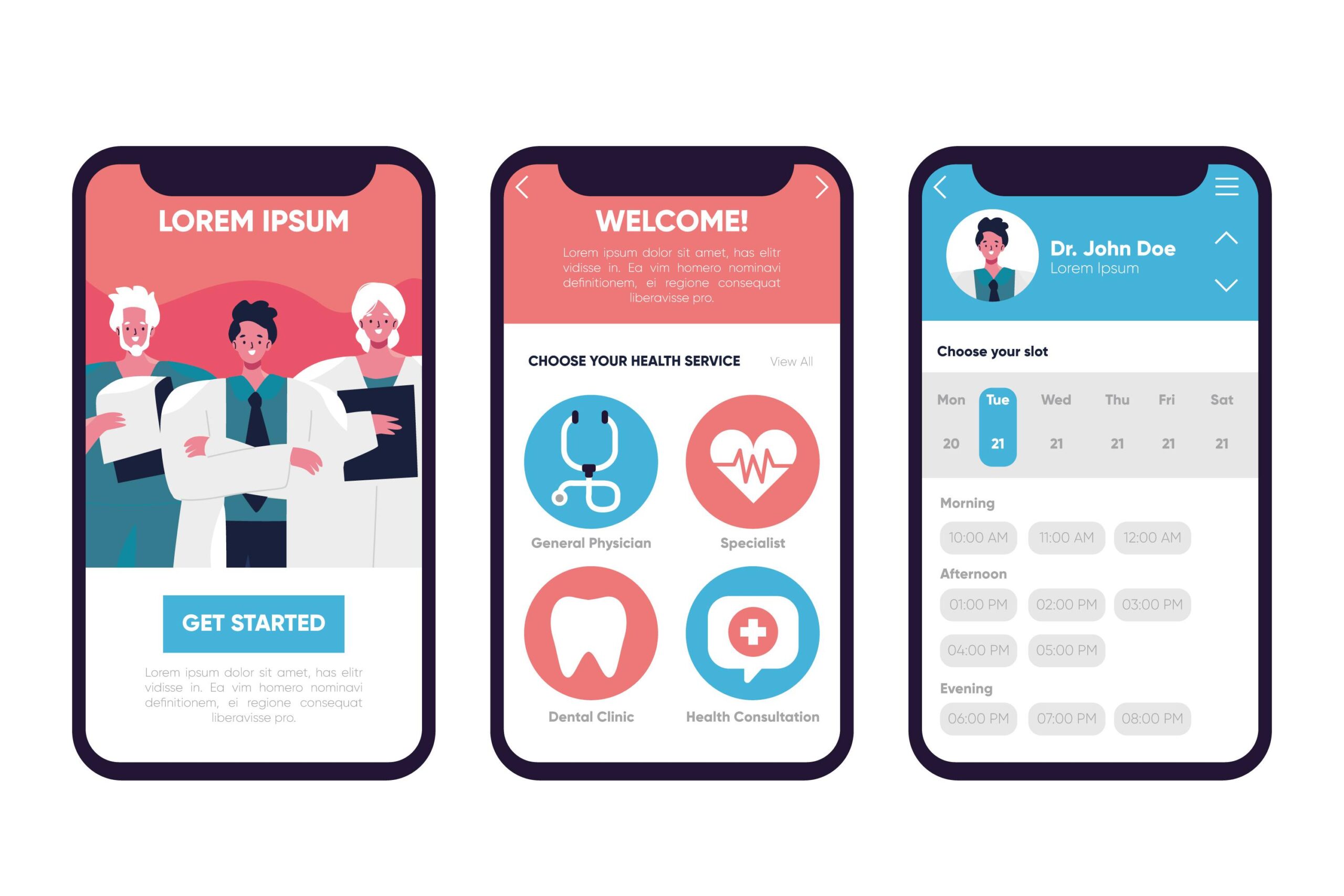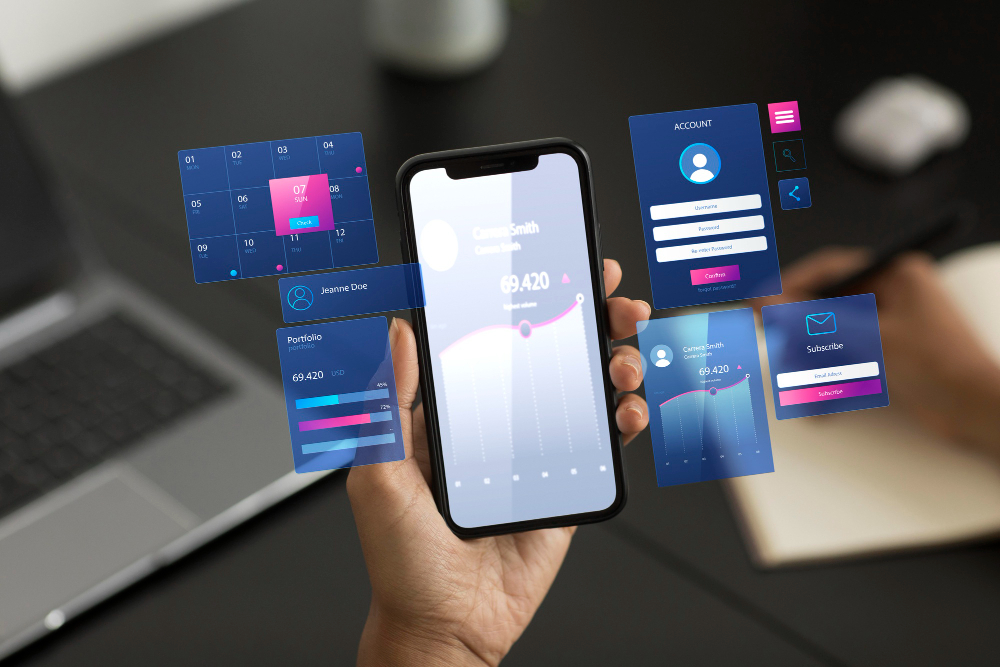In recent years, the healthcare industry has undergone a digital transformation, embracing innovative technologies to enhance patient care and access to medical services. One of the most promising advancements in this realm is the integration of Augmented Reality (AR) and Virtual Reality (VR) technologies into home healthcare services. That’s why with the help of a healthcare app development company, many enterprises are incorporating this technology to provide a better user experience and stay ahead of the competition. This integration enables the development of powerful healthcare apps that bring medical expertise and personalized care directly to patients’ homes.
The Power of AR and VR in Healthcare
AR and VR technologies have proven their potential in various industries, and healthcare is no exception. Augmented Reality overlays digital information onto the real world, enhancing the user’s perception of their surroundings. Conversely, virtual Reality immerses users in a wholly digital environment, offering unique experiences and opportunities for training, therapy, and beyond.
In the context of healthcare, AR and VR offer several advantages:
- Remote Consultations and Diagnoses: Healthcare apps leveraging AR and VR technology can facilitate remote consultations between patients and medical professionals. Patients can use AR-enabled devices to share real-time visuals of their symptoms, enabling doctors to make more accurate diagnoses. Conversely, VR can transport doctors into a patient’s environment, providing a firsthand view of their conditions.
- Personalized Medical Education: AR and VR can be employed to educate patients about their medical conditions, treatment plans, and surgical procedures. Interactive 3D models and simulations can help patients understand complex medical concepts, empowering them to make informed decisions about their healthcare.
- Home Physical Therapy and Rehabilitation: For patients recovering from surgeries or injuries, VR can offer guided exercises and therapy sessions within the comfort of their homes. These immersive experiences make physical therapy engaging and motivate patients to stay consistent with their routines.
- Cognitive Therapy and Pain Management: Virtual Reality has shown promise in managing chronic pain and anxiety. Healthcare apps can provide immersive environments designed to distract patients from pain, reduce stress, and facilitate relaxation through meditation exercises.
- Medical Training and Skill Enhancement: AR and VR are transforming medical education by providing hands-on training opportunities for aspiring healthcare professionals. Medical students can practice surgical procedures and interact with virtual patients, refining their skills in a risk-free environment.
Development of Healthcare Apps with AR and VR Technology
Developing healthcare apps incorporating AR and VR technology requires a comprehensive approach prioritizing usability, accuracy, and user experience. Here are the critical steps in creating such an app:
- Needs Assessment and Planning: Identify the specific healthcare needs that AR and VR can address. Whether it’s remote consultations, diagnostics, therapy, or medical training, outline the app’s goals and functionalities.
- User Interface (UI) and User Experience (UX) Design: Design a user-friendly interface that accommodates both patients and medical professionals. The UI should be intuitive, providing easy navigation and access to AR and VR features. Prioritize a seamless and immersive user experience.
- Integration of AR and VR Technology: Collaborate with AR and VR experts to integrate the technologies seamlessly into the app. Ensure that the app supports various devices, from smartphones to specialized AR and VR equipment.
- Data Security and Privacy: Given the sensitive nature of healthcare data, prioritize robust data security measures. Implement encryption, authentication, and secure data storage to protect patient’s personal and medical information.
- Collaboration with Medical Professionals: Involve medical professionals in the app’s development to ensure accuracy, reliability, and relevance. Their insights can guide the app’s functionalities and features to meet the needs of both patients and practitioners.
- Testing and Iteration: Thoroughly test the app’s functionalities across different devices and scenarios. Gather feedback from users and medical professionals, and iterate based on their suggestions to improve the app’s performance and usability.
- Compliance with Regulations: Adhere to relevant healthcare regulations, such as HIPAA (Health Insurance Portability and Accountability Act), to ensure the app’s compliance with data protection and patient privacy standards.
If you’re considering developing a healthcare app that utilizes AR and VR technology, it would be worthwhile to reach out to a mobile app development company in Australia for assistance.
The Future of Home Healthcare with AR and VR
Integrating AR and VR technology into home healthcare services reshapes how medical care is delivered and received. By offering remote consultations, personalized education, immersive therapy, and advanced training, healthcare apps are extending the reach of medical expertise beyond the confines of traditional healthcare facilities.
As technology advances, the possibilities for AR and VR in healthcare are limitless. From improving patient outcomes to revolutionizing medical education, these technologies hold the potential to create a more accessible, efficient, and patient-centric healthcare ecosystem.
Moreover, Incorporating Augmented Reality (AR) and Virtual Reality (VR) technologies within healthcare app development can profoundly transform medical practices and patient involvement. The fusion of AR and VR introduces an engaging and interactive dimension to the healthcare sector, redefining medical education, diagnostics, treatment strategies, and patient engagement.
Conclusion
In conclusion, AR-integrated healthcare apps empower medical professionals by superimposing critical information onto real-world scenarios. For instance, surgeons can benefit from real-time guidance during intricate procedures, displaying crucial data directly within their field of vision. Conversely, VR technology immerses patients in captivating environments, relieving pain and alleviating anxiety during medical interventions. Healthcare apps leveraging VR have the potential to offer therapeutic solutions for mental health challenges like anxiety disorders and phobias. Additionally, VR-powered rehabilitation exercises can expedite recovery for individuals with physical ailments.
While the possibilities presented by AR and VR in healthcare app development are extensive, challenges such as safeguarding data privacy, ensuring user comfort, and seamlessly integrating with existing healthcare systems must be surmounted. As a result, entrepreneurs are taking the support of a healthcare app development company to fulfill user needs for modern healthcare.
In a swiftly evolving healthcare arena, AR and VR provide opportunities to bridge geographical gaps, enhance medical training, and enrich patient involvement. As these technologies mature, cooperative efforts between healthcare practitioners, app developers, and technological pioneers will play a pivotal role in unlocking their complete potential.




